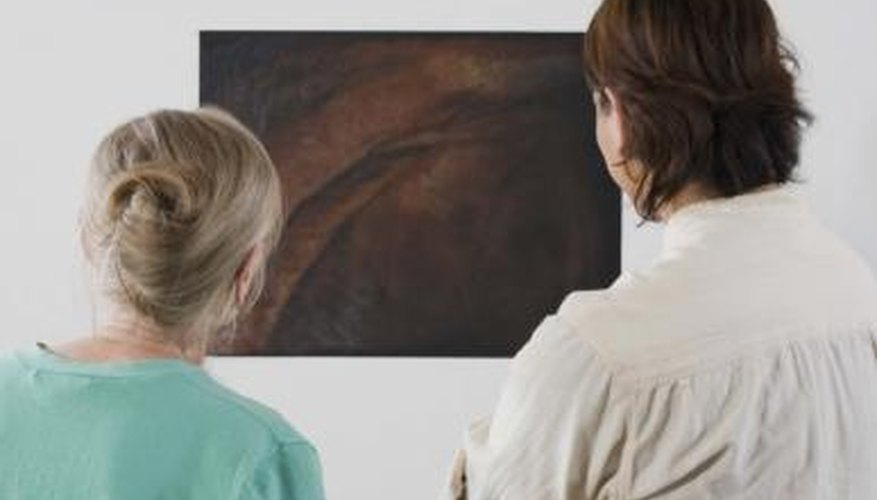If you're a serious art collector, you're probably very interested in letters of provenance. An accurate letter of provenance usually increases the value of a collectable, antique or piece of art. But to write a letter of provenance, you must first research the item's history and look for concrete evidence of ownership. You must also verify the evidence itself -- letters of provenance can't include hearsay. In most cases, no one piece of documentation proves provenance by itself.
- If you're a serious art collector, you're probably very interested in letters of provenance.
- But to write a letter of provenance, you must first research the item's history and look for concrete evidence of ownership.
Gather supporting materials. These include private letters, newspaper articles, gallery catalogues and books that reference the work. References may include sales receipts, gallery stickers, a list of owners and appraisals and certificates of authenticity written by recognised experts. If someone told you something about the work's origins, write down the information and include the date you received the information, from whom and make it clear that the information came to you orally. Use only original documents or copies of documents that are readily available at a university, gallery, museum or library.
Take note and list information about the artist and the piece in question. Include the name of the artist or maker at the top of the page on the left. Next to that, list the maker's country of origin. Then list the maker's years of birth and death. List the name of the piece, if there is one, under the artist's name; italicise this information or put in quotation marks. Include the year the piece was made. Next, list the medium. After including that information, describe the dimensions of the piece. Finally, name the person or institution who gifted, bequeathed or sold the piece to the current owner. Mention any special relationship that may exist between the current owner and the previous owner. For example,
- Take note and list information about the artist and the piece in question.
"William Hunt, English, 1800-1873, in Kentucky after 1820
Huntington Table
1835
Oak with poplar drawer
60 x 30 x 32 1/2
Gift of Gerald Hicks, 1958, member of Smyth Museum of Art Board of Directors."
Describe the history of ownership, beginning as far back as possible. Use a narrative paragraph rather than a list of facts. Include dates, names, nationalities and locales that are pertinent. For example, "This table was made to order for Benjamin Scott (American, 1791-1850, Kentucky). His daughter Sally Scott Peabody (American, 1825- 1920, in Ohio after 1900) inherited the table when he died. Her family sold the table at auction after her death. It was purchased by Gerald Hicks (American, 1890-1959, Ohio) who kept it in his Roseville, Ohio home until he gifted it to the Smyth Museum of Art in 1958. It has been on display there since."
- "William Hunt, English, 1800-1873, in Kentucky after 1820 Huntington Table 1835 Oak with poplar drawer 60 x 30 x 32 1/2 Gift of Gerald Hicks, 1958, member of Smyth Museum of Art Board of Directors."
- His daughter Sally Scott Peabody (American, 1825- 1920, in Ohio after 1900) inherited the table when he died.
List any supporting documents associated with each entry. Include dates, names and the addresses and other contact information associated with each owner. Place this information in a separate inventory list titled "Supporting Documents."
TIP
The older a piece is, the more likely its provenance will have gaps. Mention names and describe events and existing documentation that may help someone to trace ownership during those years.
WARNING
By itself, an appraisal or certificate of authenticity does not prove provenance. Never make an offer on a piece of art unless the seller is willing to show you the provenance first.
